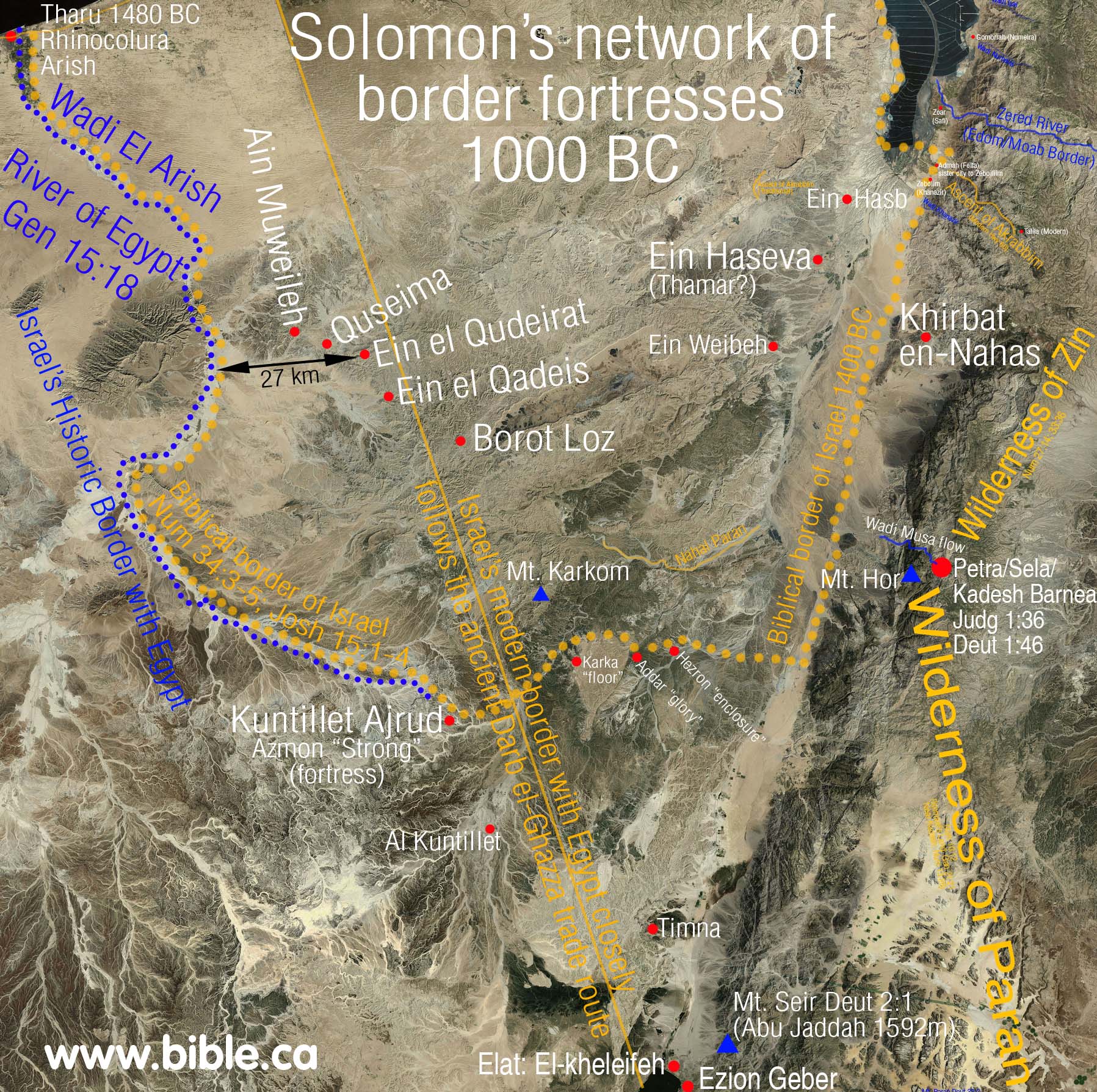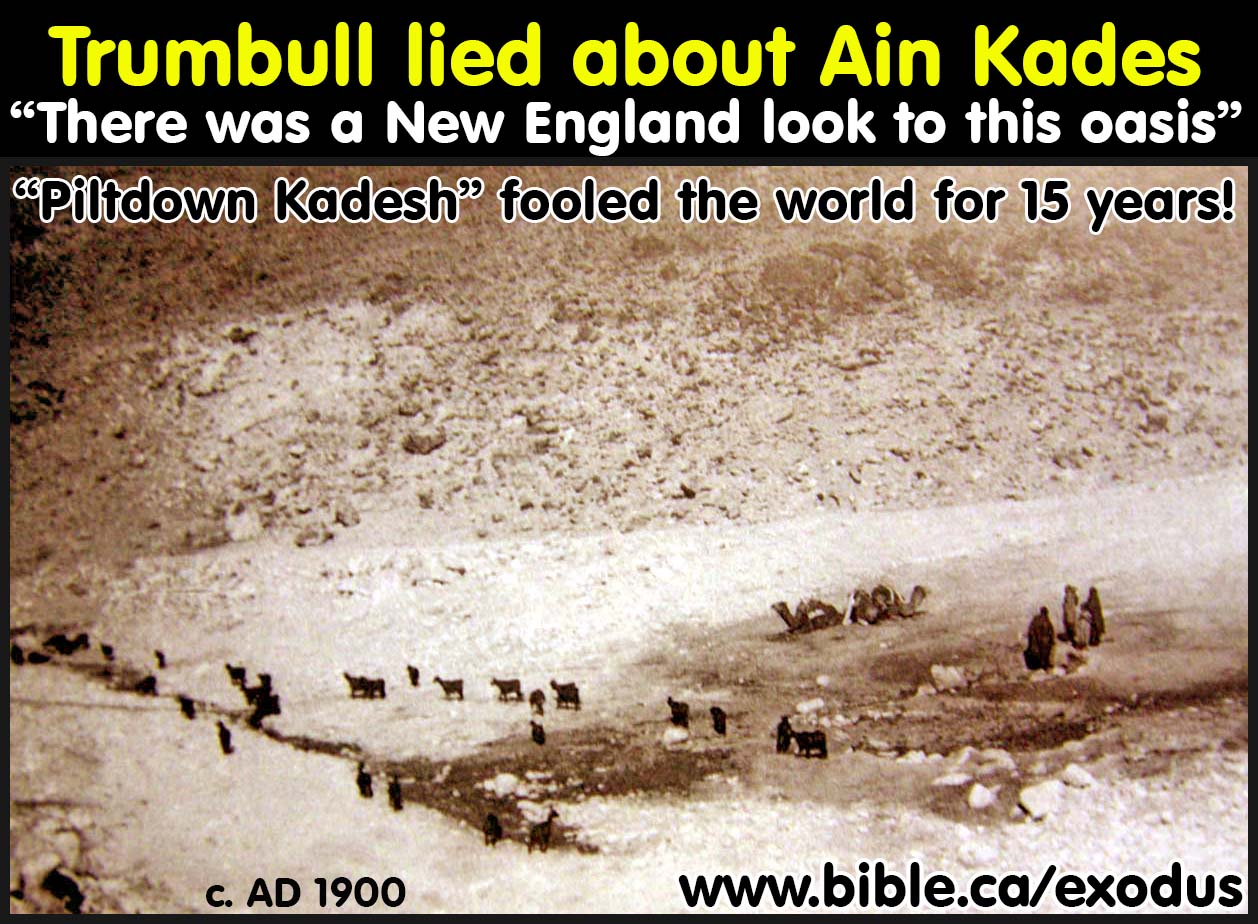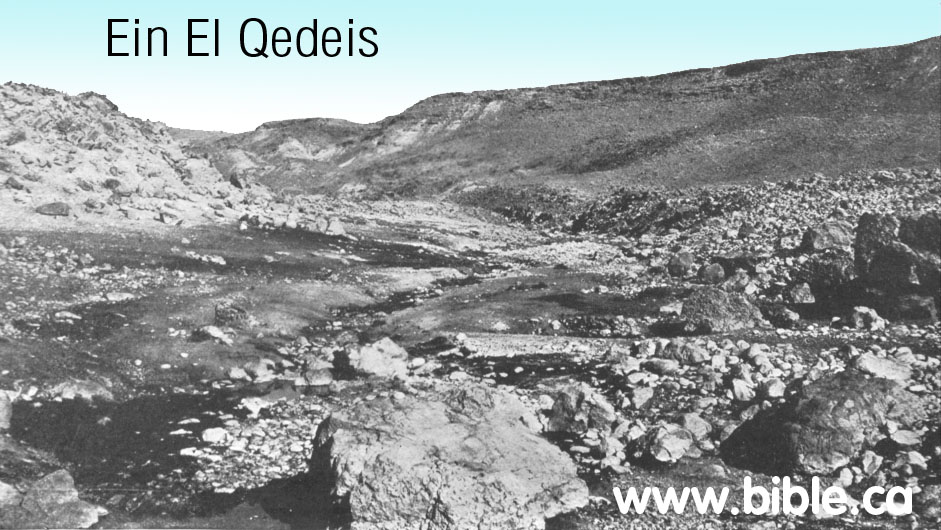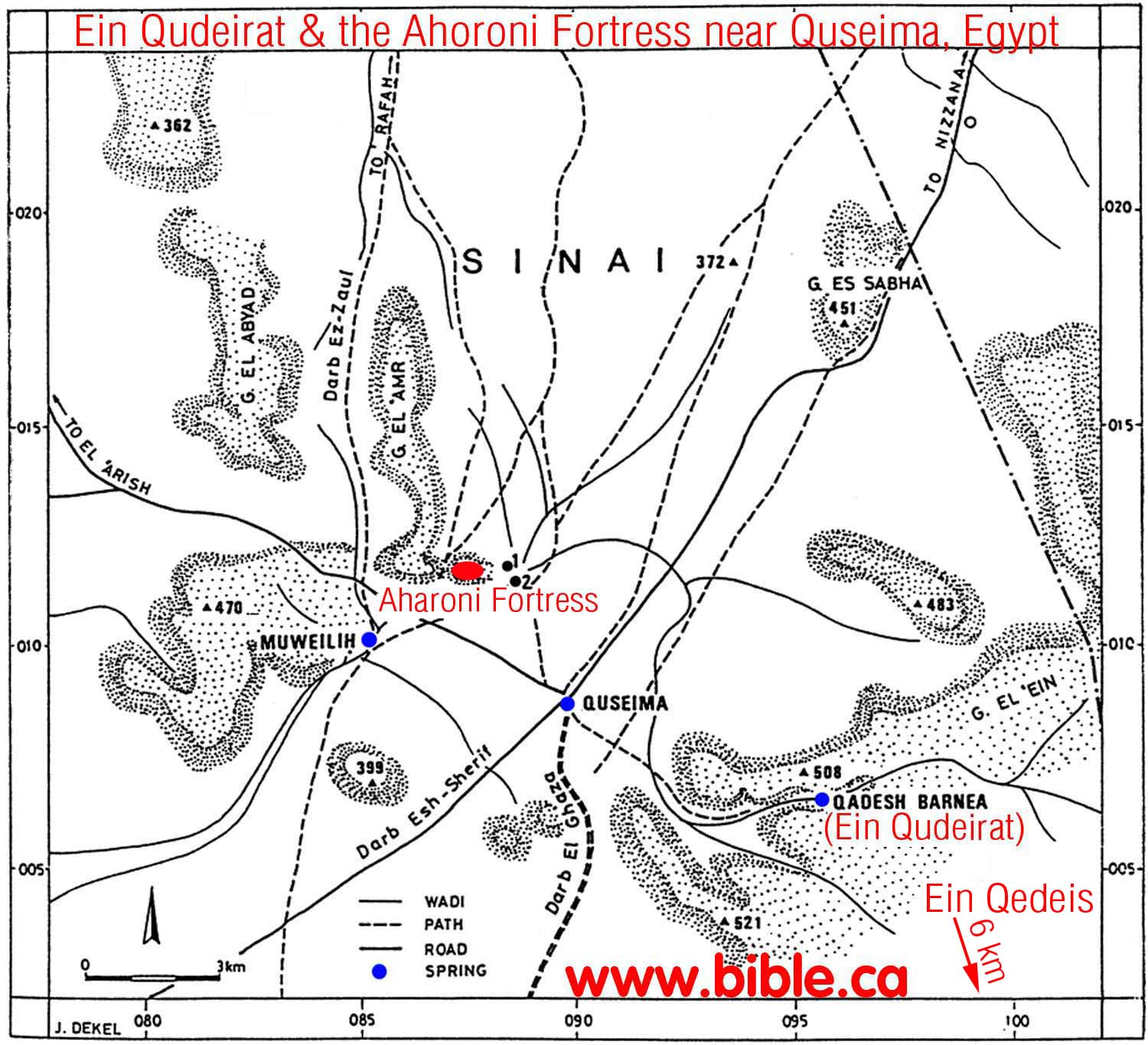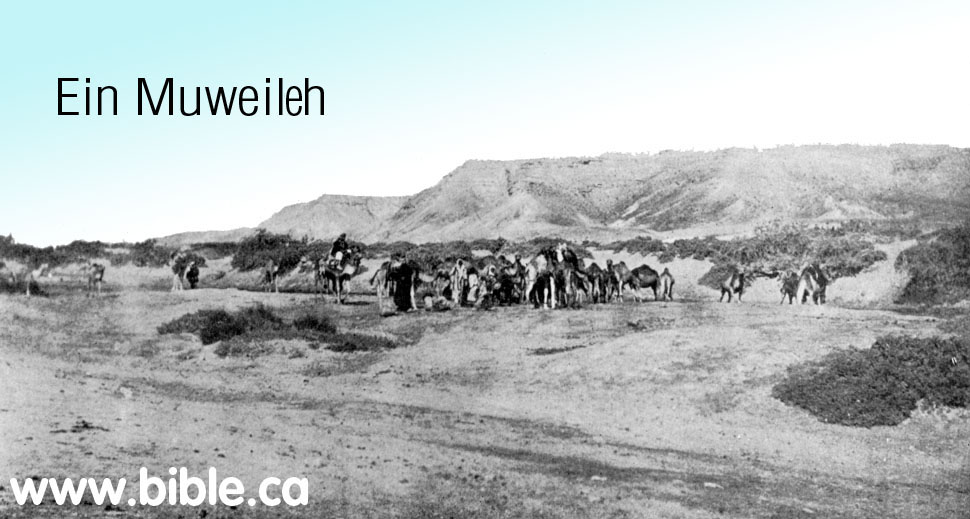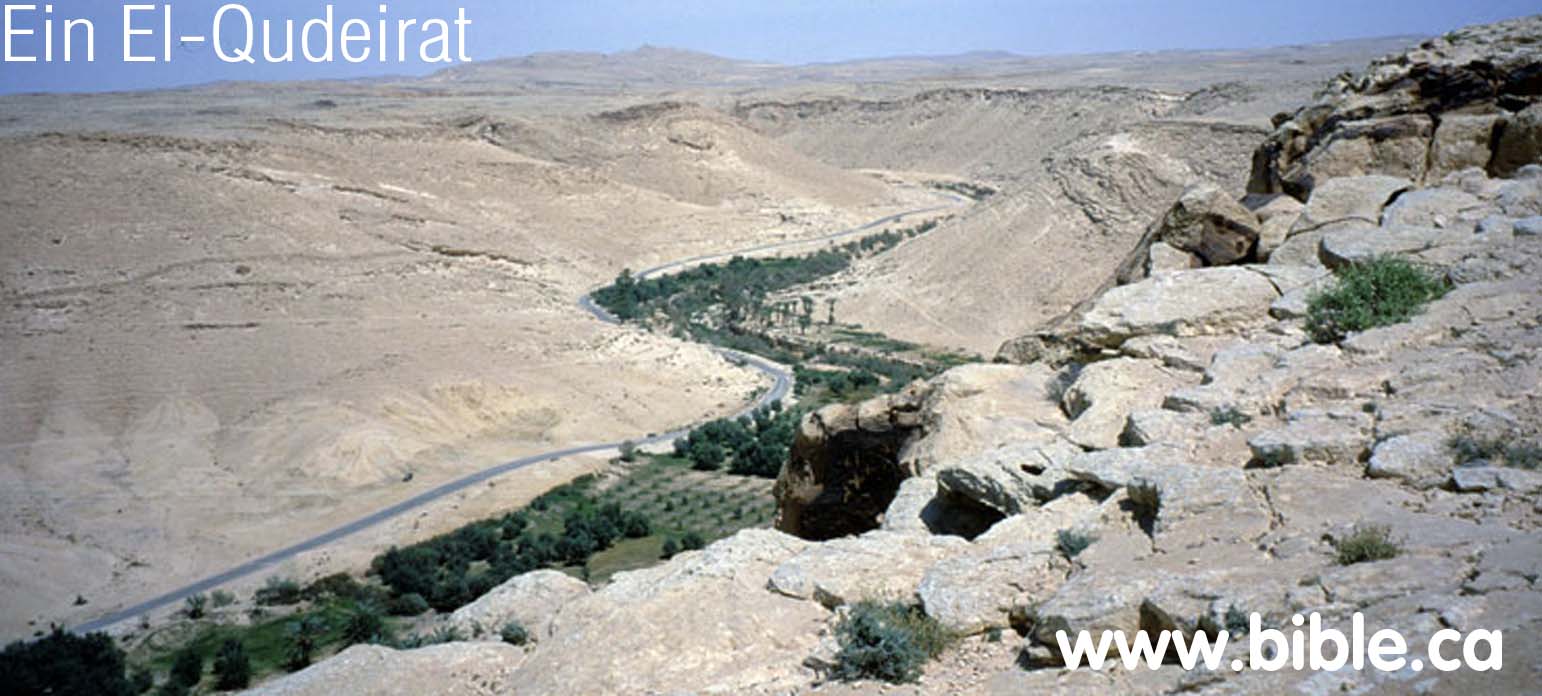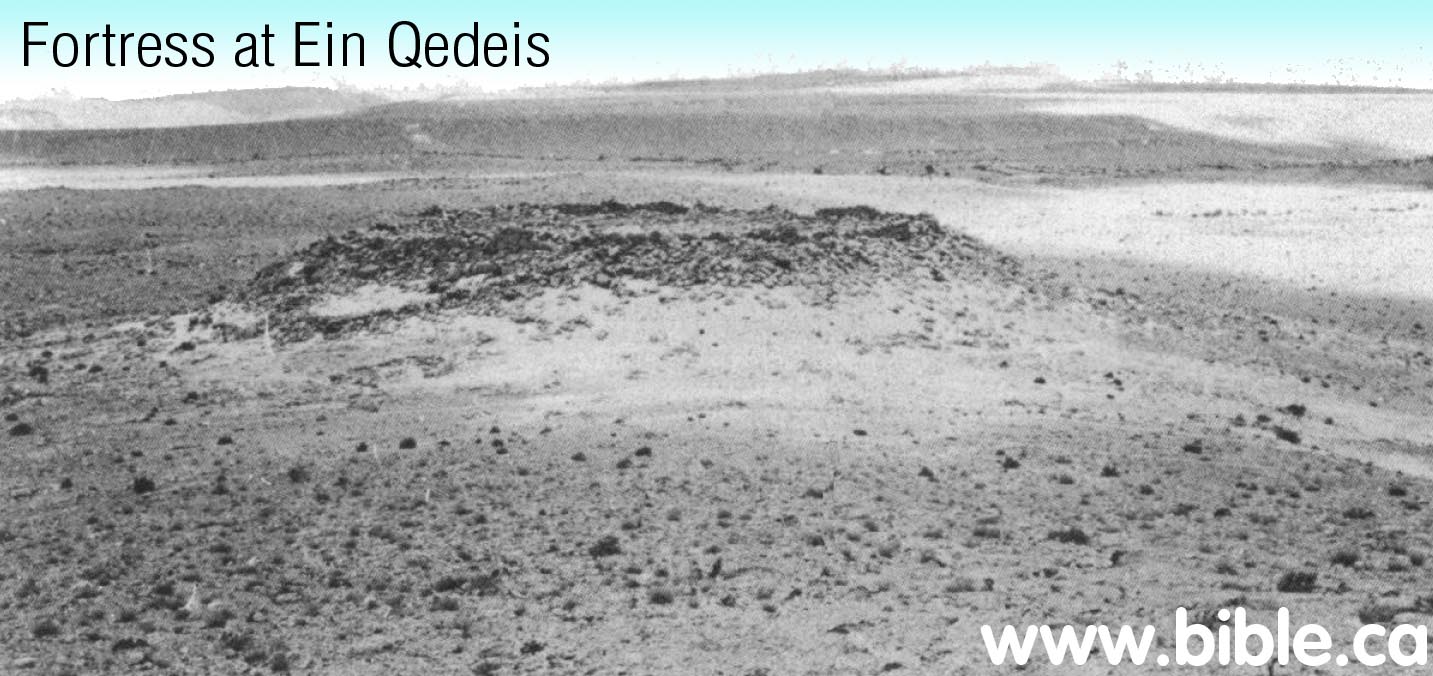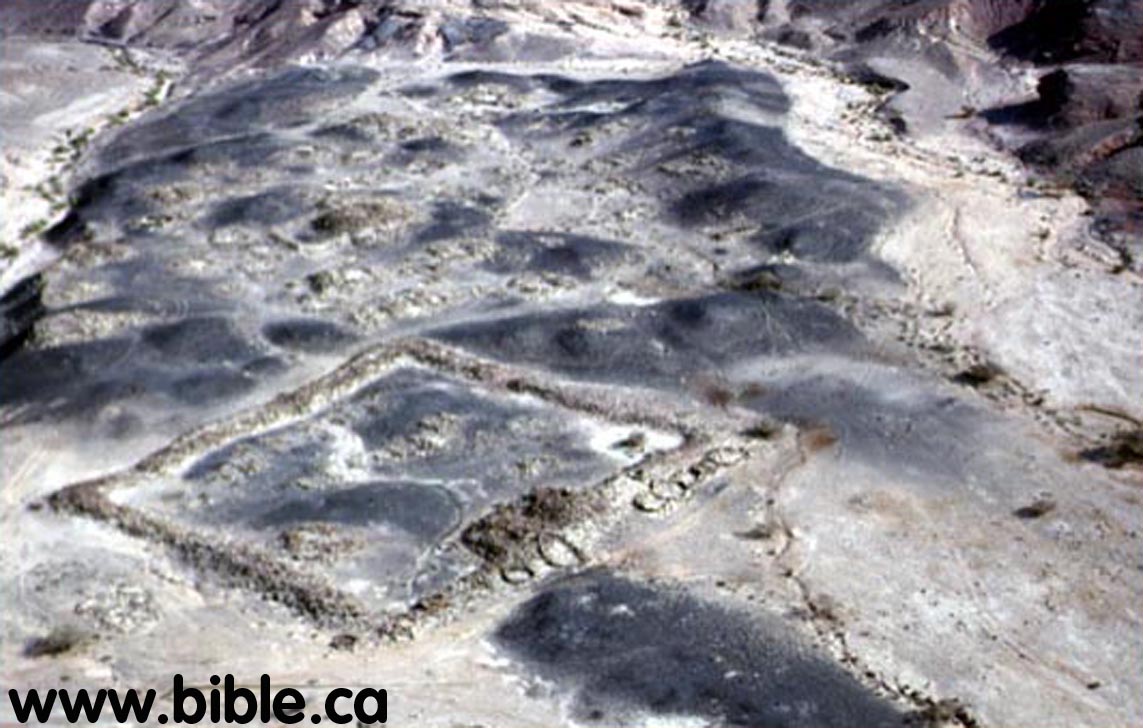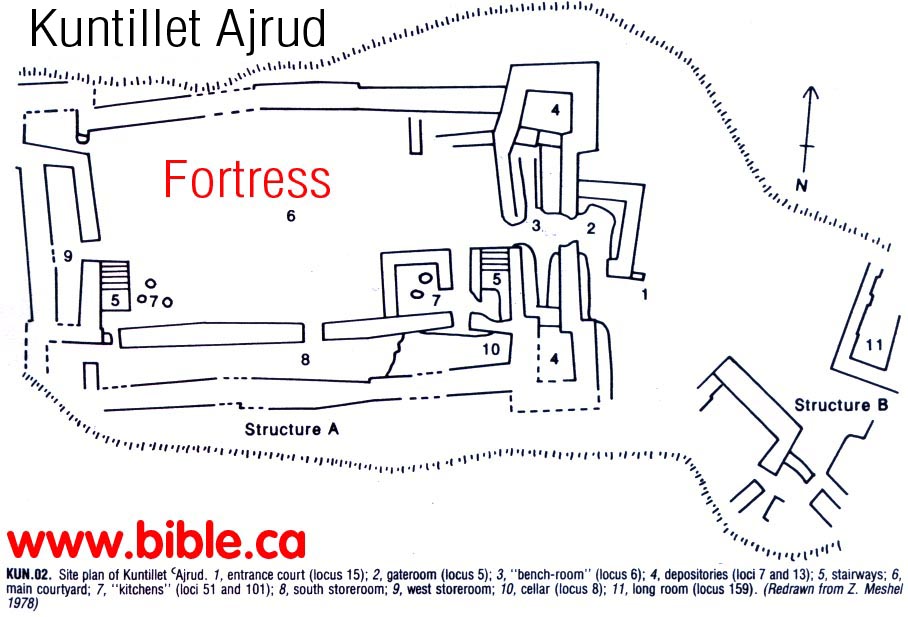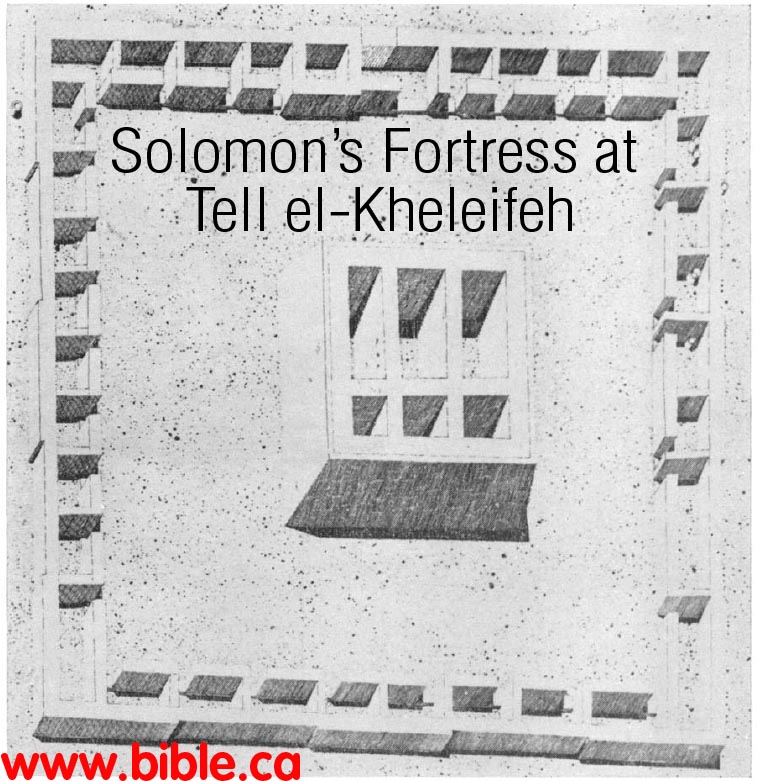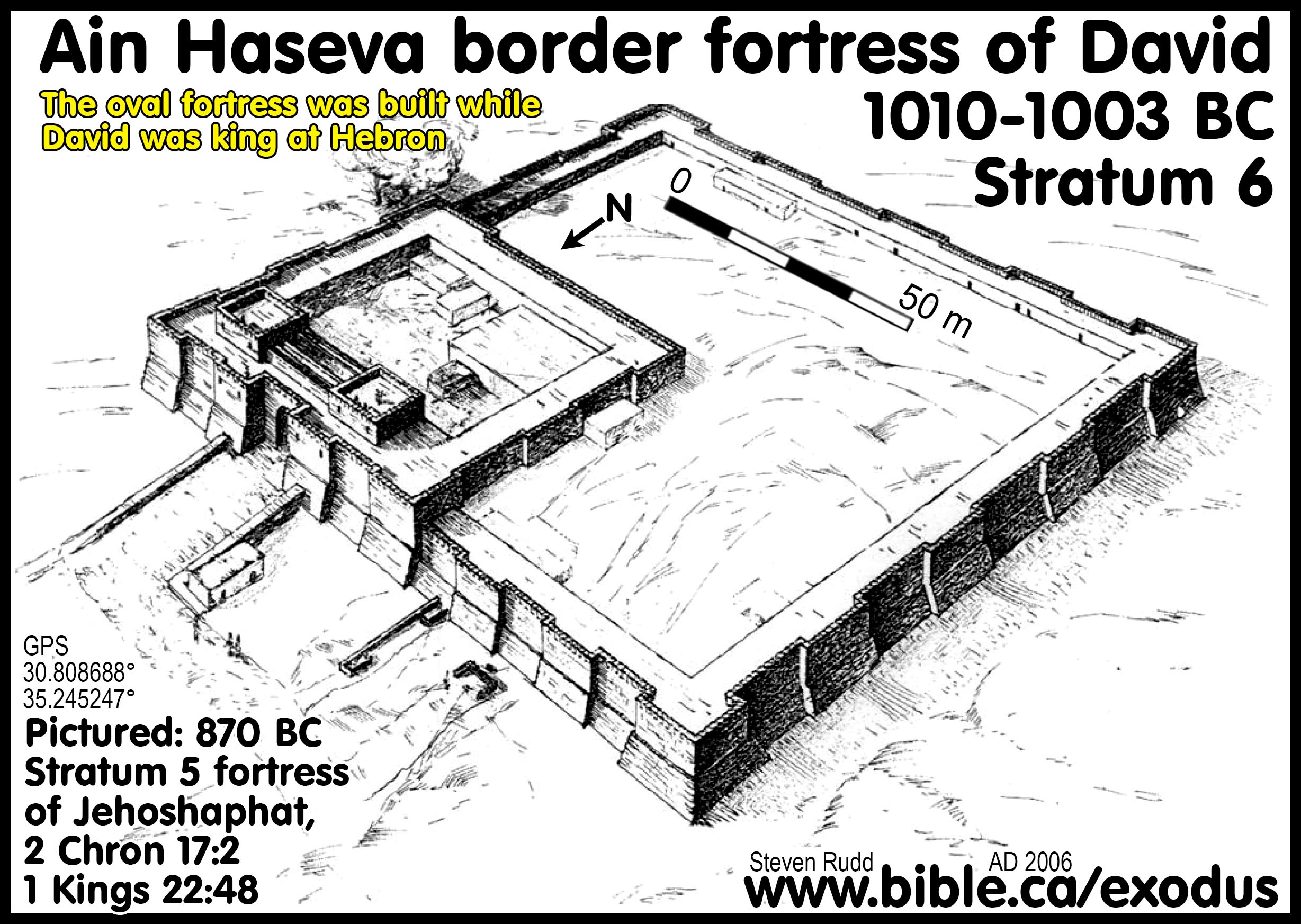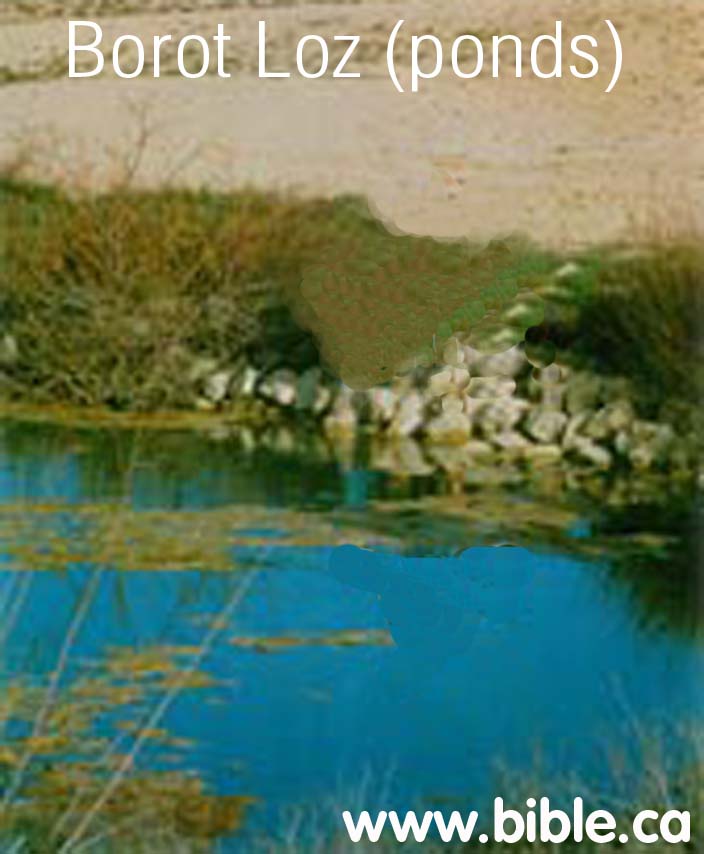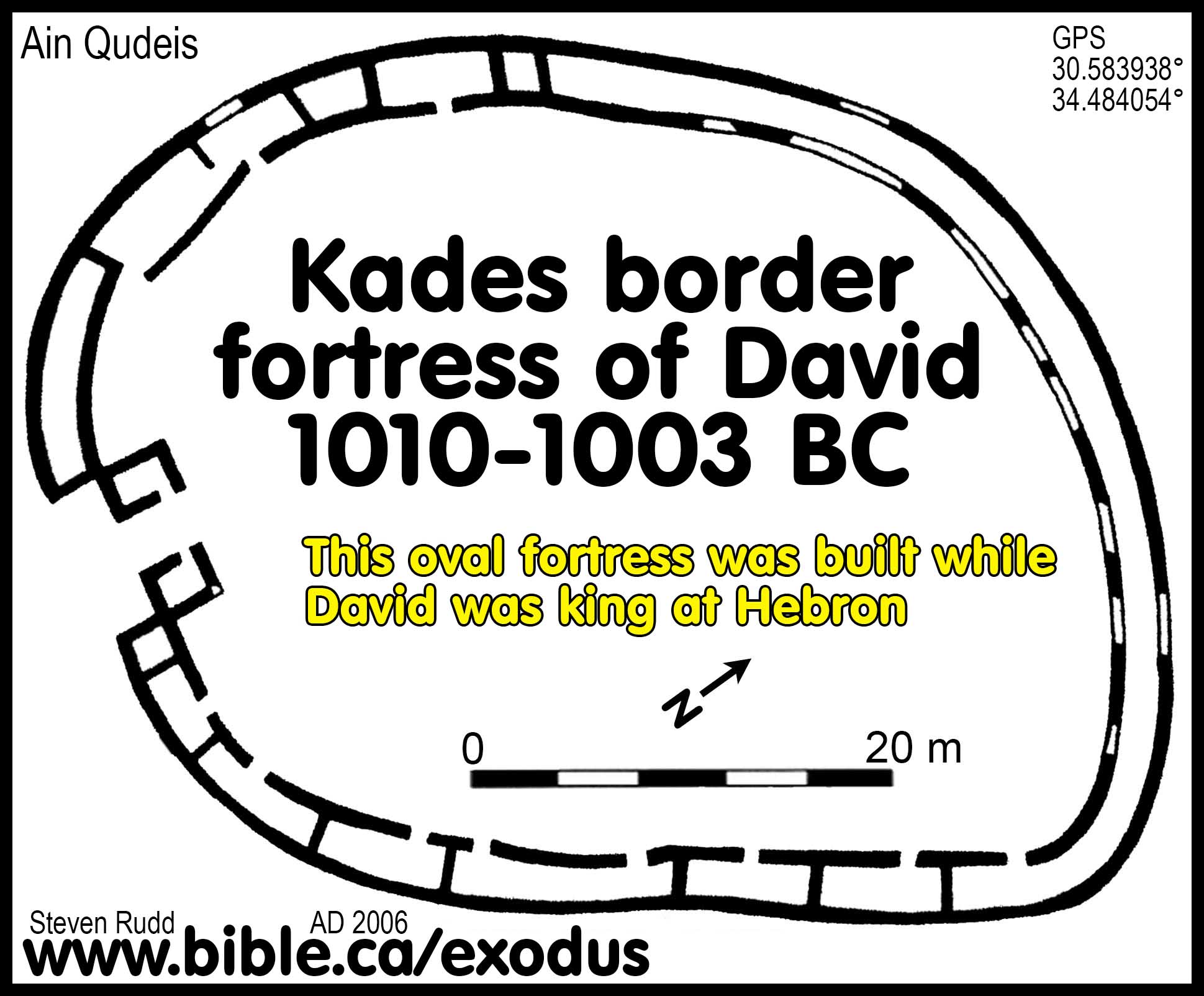Ein El Qedeis: "Piltdown Kadesh"
The world's
choice for Kadesh Barnea: 1881 - 1916 AD
Introduction:
- Ein Qedeis means "Holy Fountain". (ein = spring; Qedeis = holy) Qedeis also known as Kadis or Kades. Ein which is sometimes spelled ain, means "spring".
- John Rowlands goes down in history as the man who plunged the search for Kadesh Barnea in to the "Dark Ages" (1881 AD - present). But Ein Qedeis would be just another desert spring without Henry Clay Trumbull who is responsible for literally deceiving the entire world into believing it was Kadesh Barnea. The "one-two punch" of Rowland-Trumbull moved the worlds attention for the location of Kadesh from the Transjordan Arabah to where it has been presently located on all Bible maps since 1916 AD.
- There are actually two Kadesh's in the Bible.
- Transjordan Kadesh Barnea in the negev where Israel spent 38 years from 1445-1407 BC (barnea = wilderness).
- One located north of Israel in Syria: (Kadesh on the Orontes) "Then they came to Gilead and to Kadesh in the land of Tahtim-hodshi, and they came to Dan-jaan and around to Sidon," (2 Samuel 24:6)
- Kadesh means “holy”
- The fact that 19th century Muslims called a spring "holy" (ie Kadesh = holy) is as unsurprising as it is unconvincing for Kadesh.
- Modern Jewish funerals are also called a “kadesh" because they are sacred and holy.
- The fact that 3 million Hebrews died during the exodus at Kadesh and buried there may in fact be the original etymology of the name.
- Although in 1842 AD John Rowlands was the very first man in history to suggest Ein Qedeis was Kadesh Barnea, it became the majority opinion choice for Kadesh Barnea from 1881 - 1916 AD. Before 1881, everyone was looking for it in the Arabah Valley area or near Petra as Josephus said it was. After 1916, Qudeirat became the choice and is still to this very day. We however reject both Qedeis and Qudeirat as Kadesh Barnea and believe it is located at or near Petra.
- The "similarity of modern name" argument became the most important "proof" that Kadesh Barnea had been found at Ein Qedeis until Ein el-Qudeirat dethroned Ein Qeudeis in 1916 AD. Scholars like Keil & Delitzsch in 1867 AD, William Smith's Bible Dictionary in 1884 AD and the New Advent Catholic encyclopedia, Cades, 1917 AD all focused upon the similarity of modern name. But all this was thrown aside and forgotten when a larger spring was found 6 km north at Qudeirat. Ein El-Qudeirat means "Fountain of Omnipotence" or "Fountain of God s Power". This has nothing to do with any connection with God bringing water from the rock with Moses, but the fact that Qudeirat is the largest spring in the entire Sinai Peninsula for a 100 km radius! Not surprising that they would call it "God's powerful spring." Of course the problem with Trumbull's search for a similar sounding name is strange and ill-advised, given the fact that Kadesh was changed to "Sela" by the Edomites when Israel vacated in 1406 BC. Sela is even found in the Bible. It underwent several name changes until the Nabataeans started calling it Petra. Both Sela and Petra mean: "rock". So the name Kadesh hasn't been used since 1406 BC and the name "rock" (Sela/Petra) has been used from 1406 BC down to the present. Seems like we need to look for modern places that have the word "rock" in them... like Petra!
- The Quseima
area has been the general area chosen by archeologists for Kadesh since
1881 AD. Attention shifted from the Petra area to the Quseima
area because of the deceptions and lies of Clay Trumbull. After
visiting Ein Qedeis, he published a ridiculously deceptive account that
made the dry, lifeless dustbowl appear to be a tropical forest. This
account changed the worlds opinion on where Kadesh was located and
everyone accepted Trumbull's new location for Kadesh. It took almost 16
years for the world to learn of Trumbull's deception. So Henry Clay
Trumbull got his 30 years of fame for identifying Kades as Kadesh Barnea
through deception. Much like the "Piltdown man" fraud, that
deceived the world into believing evolution, so too the world was deceived
through Trumbull's lies. For the first time in history, Trumbull's "Piltdown Kadesh" as we call it, drew
attention away from the Arabah Valley in the search for Kadesh Barnea. 100
years later, we are using the Bible to again look for Kadesh at or near
the Petra area.
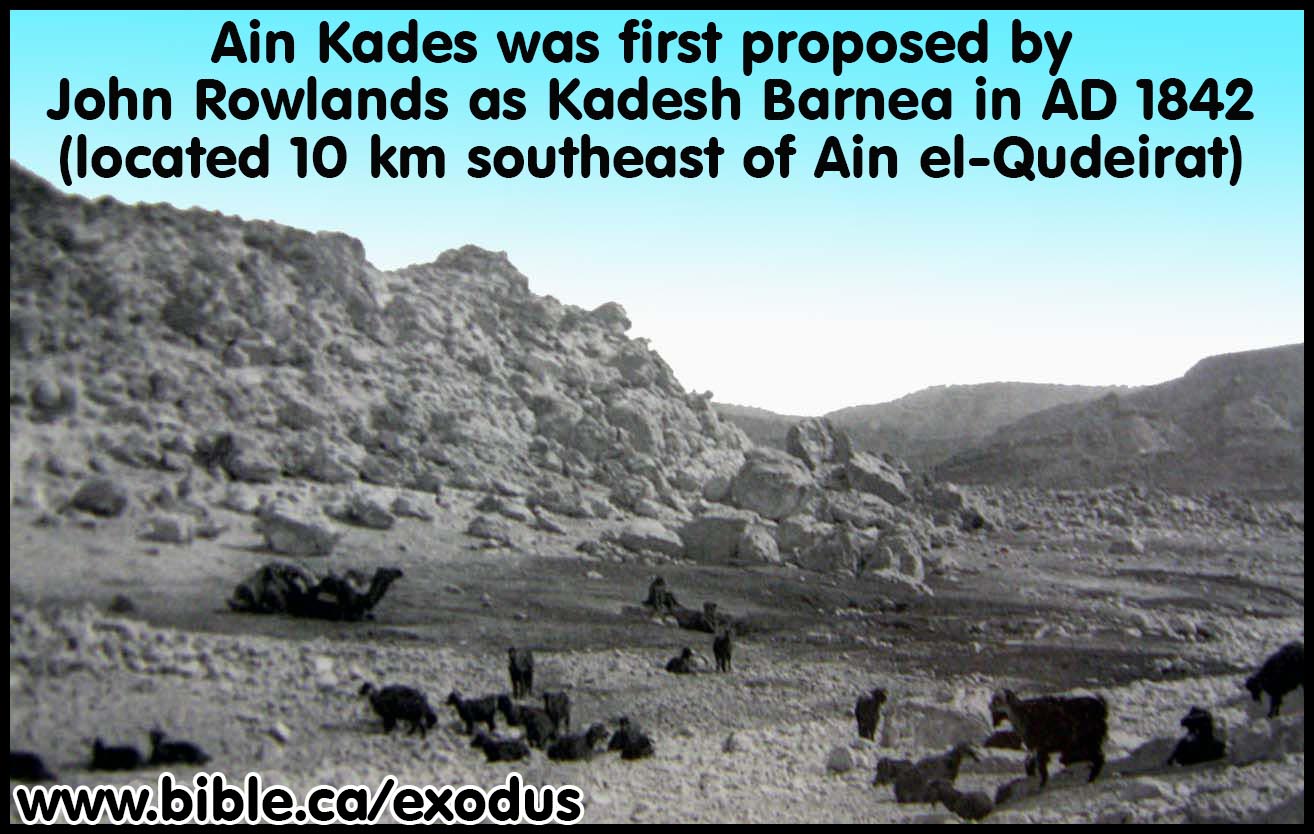
Ein Qedeis is a barren dustbowl. - "The
actual site of Kadesh-Barnea has long been a subject of scholarly dispute.
The earliest 19th century investigators, men like Karl von Raumer and
Edward Robinson, looked for Kadesh-Barnea in the
Aravah, the deep geomorphic rift extending from the southern end of
the Dead Sea to the Red Sea. Based on the reference in Numbers 20:16 to
Kadesh as being on the border of Edom and the fact that the Aravah was
thought to be the western border of Edom, various
oases in the Aravah were proposed as the site of Kadesh-Barnea. In
the 1880s, Henry Clay Trumbull suggested Ein-Qedeis, in the northern
Sinai, as the site of Kadesh-Barnea. What appeared to be the retention of
the Biblical "Kadesh" in the Arabic "Qedeis" was a
forceful and appealing argument in favor of Trumbull's identification.
Moreover, Trumbull described Ein-Qedeis as a luxuriant oasis which seemed
to fit the Biblical description of the site. Unfortunately, Trumbull's
description of Ein-Qedeis was highly romanticized. In fact, Ein-Qedeis is
a shallow pool of water surrounded by a desert wasteland. Ein-Qedeis could not have been a major ancient center
like Kadesh-Barnea." (Did
I Excavate Kadesh-Barnea? absence of Exodus remains poses problem,
Rudolph Cohen)
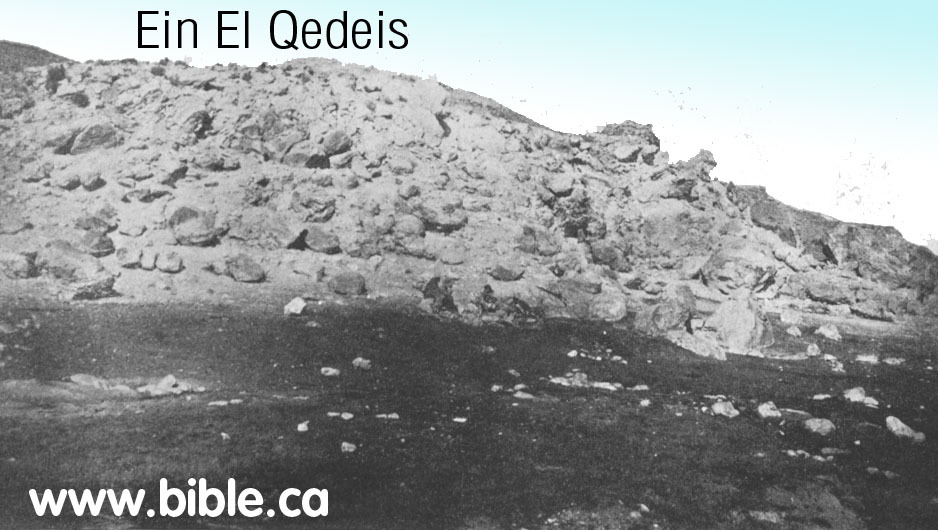
A. History of Ein Qedeis as Kadesh Barnea:
Chronological History of the search for Kadesh
|
1881-1916 AD: Ein el Qedeis |
- 1842 AD: Ein Qedeis (Qudeis or Kadis or Kades) was first discovered in 1842 AD by John Rowlands and was the first to suggest a connection between the two names "Kadesh" [Barnea] and "Kadis".
- John Rowlands recounted the discovery of Ein el Qedeis in a personal letter in 1882 AD written to Henry Clay Trumbull. Trumbell writes: "His [John Rowlands] Bible studies had satisfied him of the general location of Kadesh barnea, on the southern border of Canaan, and he became interested in a search for its site. His first movement in this direction was with his friend Williams, in a trip from Hebron, southward, in October, 1842, under the guidance of "Sheikh Salini of the Teahars"(Teeyahah?) Their discovery of the southern border line of the Promised Land, in the natural barrier of the Smooth Mountain (Mount Halak), as they stood on that wall-rampart, at the westward of Jebel Madurah, has already been cited. It was while they stood there, that Shaykh Selim informed them that at some distance westerly (or southwesterly), there was a place known as "Kadese," which they instantly recognized as a term correspondent with Kadesh, or Kadesh-barnea, on that same southern boundary line. But they were at that time unable to pursue their investigations farther ; and they returned to Jerusalem with only this gleam of horizon-light on the site of Kadesh. It was subsequent to this, that Rowlands made a new and successful attempt to find the ancient site. On his leaving Jerusalem for his home, he took the route by Hebron and Gaza in order that he might pursue his search on the strength of the hint from Shaykh Selim. His companion on this trip was Mr. Johns, architect of the English church at Jerusalem, and for a time the British viceconsul there. At Gaza, Rowlands sent for two shaykhs of the Terubcen Arabs, a tribe which roams from Gaza to Suez, and east ward toward, and even into, the Azazimeh mountain tract. "When they came," he says, " I explained to them where we wished to go, and what we wanted to find, and asked them if they knew any place in their territory or neighborhood called Kadesh, or Kades, or Kades, and they said at once, La, Hawajah, mafish ; No, sir, there is not' or there is nothing of the sort. Perhaps I do not pronounce it properly, or as you do' I said ; and I tried 'Kodes' 'Koodes' and 'Kudes'; but they still persisted in saying 'No'. 'La, mafish' or 'feesh' - 'No, there is nothing of the sort.' Having tried again various sounds, I happened to say 'Kadeis' or 'Kadase' laying the accent, or emphasis, on the last syllable, and they cried out at once, 'Fi, fi, fi' 'There is, there is, there is ' Ain Kadeis' or Qadeis' sounding the K' or Q' somewhat like G' that is, hard G. I asked them all about it, and what sort of place it was, and whether they would take us by it ; ... and they agreed to do so." (Kadesh-Barnea, Henry Clay Trumbull, 1884 AD, p 212)
- Continuing with his main proof of finding similar sounding modern places to Kadesh Trumbull comments on ein Weibeh, "There is no trace of the ancient name of Kadesh, or of its meaning, in Ayn el-Waybeh or its vicinity." (Kadesh-Barnea, Henry Clay Trumbull, 1884 AD, p 308)
- Trumbull in his final argument in chosing ein Qedeis as Kadesh leans heavily on the similar sounding name: "And the place itself bears the equivalent name of Kadesh in three-fold form, as Jebel Qadees, AVady Qadees, and Ayn Qadees. Moreover, neither Qadees nor Retemat Kadesh or Rithmah is to be found elsewhere in all that region. Even though too much dependence ought not to be put on the preservation of such names as these, it must be admitted by all, that when the proof of the location of Rithmah and Kadesh in just that vicinity is made reasonably conclusive, by independent evidence, it is certainly no objection to the identification to find that the ancient names are still to be found there, as held and repeated by the unchanging people of that region. ... And as to the name of the oasis, about which Robinson and others were so in credulous, it is Qadees, as it was written for me in Arabic by my intelligent Arab dragoman, a similar name to that of Jerusalem, El-Quds, the Holy; the equivalent of the Hebrew Kadesh."(Kadesh-Barnea, Henry Clay Trumbull, 1884 AD, p 320)
- If Trumbull was wanting to find Kadesh by finding similar sounding names, we need to look for modern places that have the word "rock" in them... like Petra!
- It is clear that John Rowlands is the one responsible for drawing the search for Kadesh away from the Transjordan Arabah valley. Although Rowlands "used his Bible", he certainly did not use it very well. He correctly understood from the Bible that Kadesh was located outside the border of Israel, but drew the border almost 40 kms east of the Wadi el-Arish. The Wadi e-Arish is the southern border of Israel in the Bible. In fact Ein el Qedeis is 27 km east of the Wadi el-Arish, making such a location impossible as Kadesh Barnea. It is clear that he was relying heavily upon a similarity of names to the Hebrew "Kadesh". After many tries of pronunciation , the Muslim guides finally announced that they knew of the place and would take them there. The problem with all this, is that Kadesh simply means "holy". The fact that there was a spring that had a similar sounding name to "Kadesh" is a rather poor reason to assume it is the site of Kadesh Barnea. After all, Kadesh was renamed many times after the Exodus Hebrews vacated Kadesh. It is clear that trying to locate Bible places by only finding similar sounding MODERN names is almost always worthless. Remember, there are actually two Kadesh's in the Bible. One located in the far North of Israel and Transjordan Kadesh Barnea (barnea = wilderness). The fact that 19th century Muslims called a spring "holy" (ie Kadesh = holy) is as unsurprising as it is unconvincing for Kadesh.
- In 1856, Arthur Penrhyn Stanley rejected ein Weibeh and stated that Petra was the location of Kadesh.
- In 1867 AD, Keil & Delitzsch have fully accepted Ein el Qedeis as Kadesh Barnea: "Kadesh is represented in v. 16 as a city on the border of the Edomitish territory. The reference is to Kadesh-Barnea. This city was no doubt situated quite in the neighbourhood of Ain Kudes (Kades), the well of Kadesh, discovered by Rowland. This well was called En-Mishpat, the fountain of judgment, in Abraham's time. (Keil & Delitzsch, 1867, Num. 20:22-29) "With regard to the situation of Kadesh, it has already been observed at Gen. 14:7, that it is probably to be sought for in the neighbourhood of the fountain of Ain Kades, which was discovered by Rowland, to the south of Bir Seba and Khalasa, on the heights of Jebel Helal, i.e., at the north-west corner of the mountain land of Azazimeh, which is more closely described at Num. 10:12 (see pp. 688, 689), where the western slopes of this highland region sink gently down into the undulating surface of the desert, which stretches thence to El Arish, with a breadth of about six hours' journey, and keeps the way open between Arabia Petraea and the south of Palestine. "In the northern third of this western slope, the mountains recede so as to leave a free space for a plain of about an hour's journey in breadth, which comes towards the east, and to which access is obtained through one or more of the larger wadys that are to be seen here (such as Retemat, Kusaimeh, el Ain, Muweileh)." At the north-eastern background of this plain, which forms almost a rectangular figure of nine miles by five, or ten by six, stretching from west to east, large enough to receive the camp of a wandering people, and about twelve miles to the E.S.E. of Muweileh, there rises, like a large solitary mass, at the edge of the mountains which run on towards the north, a bare rock, at the foot of which there is a copious spring, falling in ornamental cascades into the bed of a brook, which is lost in the sand about 300 or 400 yards to the west. This place still bears the ancient name of Kudes. There can be no doubt as to the identity of this Kudes [Ein el Qedeis] and the biblical Kadesh. The situation agrees with all the statements in the Bible concerning Kadesh: for example, that Israel had then reached the border of the promised land; also that the spies who were sent out from Kadesh returned thither by coming from Hebron to the wilderness of Paran (Num. 13:26); and lastly, according to the assertions of the Bedouins, as quoted by Rowland, this Kudes was ten or eleven days' journey from Sinai (in perfect harmony with Deut. 1:2), and was connected by passable wadys with Mount Hor. The Israelites proceeded, no doubt, through the wady Retemat, i.e., Rithmah (see at Num. 33:18), into the plain of Kadesh. (On the town of Kadesh, see at Num. 20:16.) (Keil & Delitzsch, 1867, Numbers 12:16)
- 1878 AD: Ein el Qedeis was again visited in 1878 AD by F. W. Holland.
- 1881 AD:
Clay Trumbull visited Ein Qedeis in 1881 AD for
only one hour, and then wrote an article in 1884 AD that
formally stated that it was Kadesh Barnea. Trumbull flagrantly lied and
exaggerated his account of Ein Qedeis saying, "It was a marvelous
sight! Out from the barren and desolate stretch of the burning
desert-waste, we had come with magical suddenness into an oasis of verdure
and beauty, unlooked for and hardly conceivable in such a region. A carpet
of grass covered the ground. Fig trees, laden with fruit nearly ripe
enough for eating, were along the shelter of the southern hillside. Shrubs
and flowers showed themselves in variety and profusion. Running water
gurgled under the waving grass. We had seen nothing like it since leaving
Wady Fayran ; nor was it equalled in loveliness of scene by any single bit
of landscape, of like extent, even there. ... There
was a New England look to this oasis, especially in the flowers and grass
and weeds; quite unlike anything we had seen in the peninsula of Sinai.
Bees were humming there, and birds were flitting from tree to tree.
Enormous ant hills made of green grass-seed, instead of sand, were
numerous. As we came into the wady we had started up a rabbit, and had
seen larks and quails. It was, in fact, hard to realize that we were in
the desert, or even near it." (Kadesh-Barnea,
Ein-Qedeis, Henry Clay Trumbull, 1884 AD, p273-275)
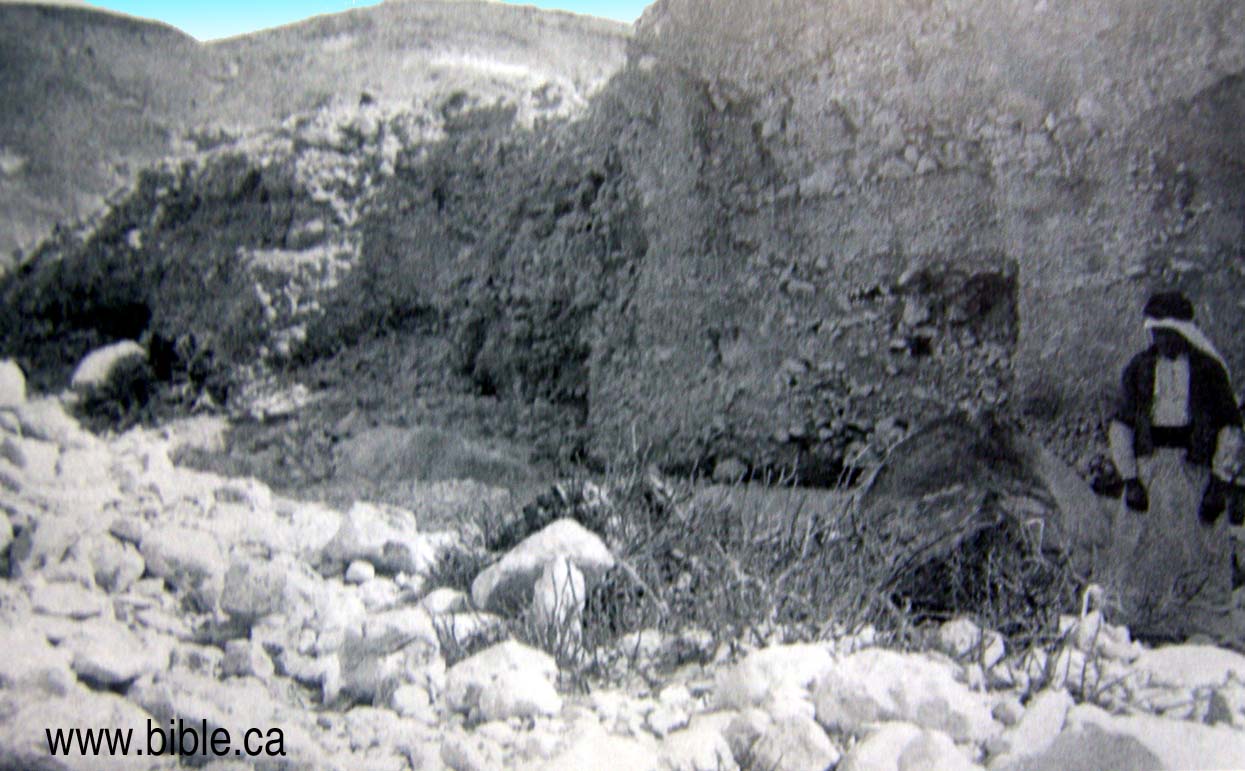
Close up of the sparse plant life. - In 1884 AD, William Smith, following the lead by Keil & Delitzsch in 1867 AD, and by Trumbull's deceptive account of the place. William Smith, therefore, was perhaps the first to be influenced by Trumbull’s lies and wrote this entry in his Bible dictionary: "There has been much doubt as to the exact site of Kadesh; but Rev. H. Clay Trumbull of Philadelphia, visiting the spot in 1881, succeeded in rendering almost certain that the site of Kadesh is Ain Kadis (spelled also Gadis and Quadis); "the very same name, letter for letter in Arabic and Hebrew, with the scriptural fountain of Kadesh --the 'holy fountain,' as the name means-- which gushed forth when Moses smote the rock." (Kadesh, William Smith's Bible Dictionary, 1884 AD)
- In 1896 AD, Kades next visited by Lagrange: In 1910, Schmidt (who himself visited Kades in 1905 AD) recounts the visit of Lagrange in 1896 AD: "No wonder that the next visitor, J. Lagrange, who came from El Natal to 'Ain Kades on the 11th of March, 1896, confesses that "the deception was so strong, the disenchantment so deep, that I prevailed on the sheik Suleiman while shouting that he brought us to the wrong place.) Suleiman swore by the Prophet that it was 'Ain Kades." There was the rock with some wasms on it, the water, the channel, an occasional tuft of grass, and a few wild figs; but no marble, no vegetation, no color, no life, no oasis of verdure and beauty. Lagrange's description shows that only fifteen years after Trumbull's visit, and at the same time of the year, the place presented very much the same appearance that it did to myself in 1905." (Kadesh Barnea, Journal of Biblical Literature, Nathan Schmidt, Vol 29, no 1, 1910 AD, p69).
- In 1901 AD, Robinson comments on Stanley who said Kadesh was at Petra: "Stanley in his Sinai and Palestine (pp. 92-8) identifies Sela' or Petra with Kadesh, which is absurd." (Modern Kadesh or Ein Kadis, George L. Robinson, The Biblical World, Vol. 17, No. 5., May, 1901AD) Of course, there is nothing absurd about Petra being Kadesh, only the idea that the city carved in stone we see today, like the "Treasury" dates back to the Exodus. Stanley was wrong to suggest that Petra as we see it today, is the result of the Hebrews in 1446 BC when in fact the city we see today was carved by the Nabataeans in 350 BC. But Stanley was right in correctly locating Kadesh at Petra. He was a lone voice.
- In 1901 AD, Robinson comments on Trumbull's deception echoing what Lagrange said in 1896. "The last to visit Ein Qedeis was Rev. H Clay Trumbull, editor of the Sunday-School Times, who in 1881 rediscovered the site, describing his search for it at length in his scholarly work entitled Kadesh-Barnea (1884), but whose actual description of the 'Ain (pp. 272 f.), we regret to say, is more rhetorical than scientific." (Modern Kadesh or Ein Kadis, George L. Robinson, The Biblical World, Vol. 17, No. 5., May, 1901AD)
- Robinson
noted that in spite of Trumbull's deceptive description of Kades, he and
most of the world scholars still viewed Kades as Kadesh Barnea: "It
is pretty generally agreed now that Kadesh of Scripture is probably the
same as Ein
Qedeis, or "Holy Fountain," of the Arabs. This is the
opinion of Rowlands, who first identified it; of Ritter and Schultz ; of
Palmer and Dr. H. Clay Trumbull; of Guthe also" (Modern
Kadesh or Ein Kadis, George L. Robinson, The Biblical World, Vol. 17,
No. 5., May, 1901AD)
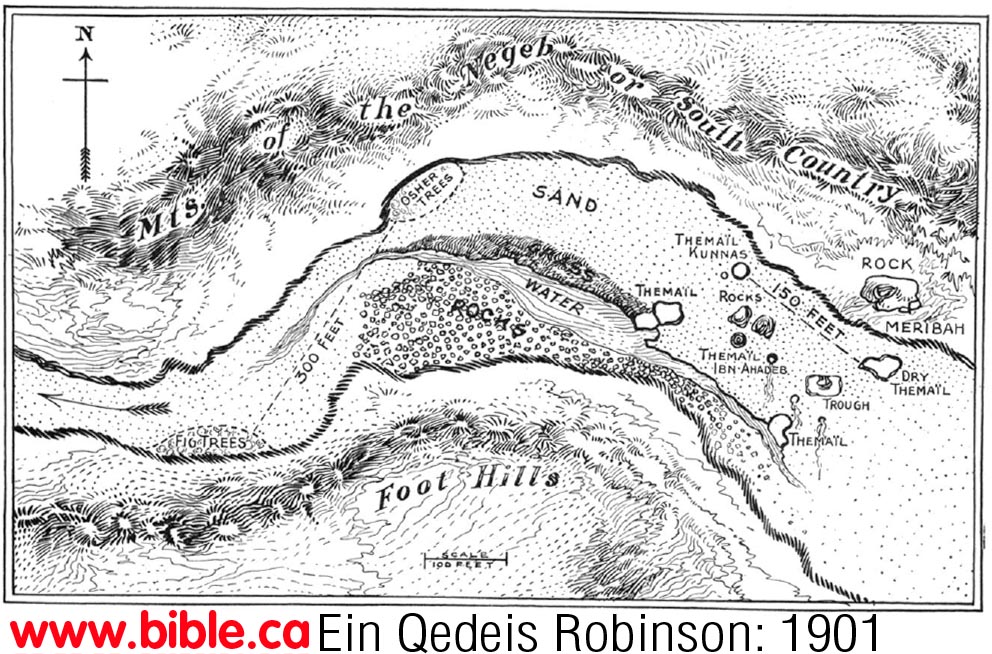
- In 1910 AD, Nathan Schmidt was next to visit Kades and he makes this comment on Trumbull's deceptive description of the place: "On March 30th, 1881, H. Clay Trumbull came to 'Ain Kades from the south. There can be no question that the picture he afterwards drew of this "oasis of verdure and beauty" was altogether too richly colored. Even when the greatest allowance is made for the season of the year, the contrast to the desert of El Tih, the keen expectancy and the joy of discovery, the later visitor cannot help asking in amazement what has become of all the marble, the carpet of grass, the fruit-laden trees, the warbling birds, and the "New England look" of the landscape, or what would have happened if the eager explorer had been taken to Ain Kades before the marvelous sight " of all this loveliness had burst upon him. His learned and valuable treatise on Kadesh Barnea in part makes amends for a manifest want of sobriety in the description of what is supposed to be its modern site. (Kadesh Barnea, Journal of Biblical Literature, Nathan Schmidt, Vol 29, no 1, 1910 AD, p69)
- Nathan Schmidt noted that the water quality at kades was good but not much else: "The water that was brought up from the fountain for the evening meal was of an excellent quality. ... Aside from the water, there is nothing very impressive about 'Ain Kades. (Kadesh Barnea, Nathan Schmidt, Journal of Biblical Literature, Vol 29, no 1, 1910 AD, p69,71)
- Nathan Schmidt noted: "The name of Kadesh has, no doubt, been preserved in the name 'Ain Kades. But it does not necessarily follow that Kadesh Barnea was located at or near 'Ain Kades. There are numerous instances of old names migrating to new settlements, and of old places receiving new names. In the Negeb, Sbeta is almost certainly an example of this. There is no ground for questioning that the name may be identical with Sephat; but there is good reason for doubting that the old Sephat was situated at Sbeta, a Byzantine city of unknown name, apparently resting on the rock, with not the slightest sign of a tell." It is rather to be looked for at El Meshrifeh. In the Philistine plain it is only sufficient to take a look at Akir to see that Ekron cannot have stood there; but the name is there, as it is also at the Jewish colony of Ekron established some twenty-five years ago." (Kadesh Barnea, Nathan Schmidt, Journal of Biblical Literature, Vol 29, no 1, 1910 AD, p73)
- Schmidt wondered if Trumbull had mixed up Kades with Qudeirat in his mind when he wrote his report as a way of explaining the lavish description of Trumbull. This explanation fails because Trumbull's account of Ein El Qedeis doesn't fit Qudeirat much better. "It is not as easy as it has seemed to those influenced by Trumbull's descriptions and the modern name to decide whether 'Ain Kades is more likely to have been Kadesh Barnes than 'Ain Kderat. The latter is the fountain par excellence in this region; it is El 'Ain. The sheltered position, the broad stream of water, the comparatively luxuriant vegetation, the impressive "tell," the well-constructed pool, the traces of ancient buildings, clearly indicate the importance of this place. It seems to me altogether probable that this is the site of the city of Paran, the ? of Judith 1:9 and 5:14, the Byzantine Cadis and the Kadesh Barnea of the Crusaders. It is not impossible that the stream flowing down Wadi el 'Ain was once called Me Meribath Kadesh." (Kadesh Barnea, Nathan Schmidt, Journal of Biblical Literature, Vol 29, no 1, 1910 AD, p73)
- In 1910 AD, Nathan Schmidt, after considering Weibeh, Kades and Qudeirat, rejected them all and concluded that Kadesh was in fact at Petra: In choosing the location of Kadesh, Schmidt rejected Qudeirat in favor of Petra in 1910 the same way that Stanley rejected Weibah in favor of Petra in 1856: "It seems to me even more probable that Petra was the original scene of these stories. Here the great Deliverer (Cp. my article "The Jerahmeel Theory and the Historic Importance of the Negeb," Hibbert Journal, vi. 2 January, 1908, pp 339ff.) performed the miracle of piercing the rock and sending the wonderful stream through the Sik, and here his older brother Aaron died on the peak of Mt. Hor. In earlier times the gulf of 'Akabah reached farther north than it does to-day, and a passage from the eastern side over to El Tih may not have been as easy as it is at present. Nomadic tribes pushing northwest from the land of Midian no doubt found their way down into the Negeb through the defiles of Mt. Seir (Jebel Sharra). The Idumaean clans that camped around Moserah and Zin probably brought with them the traditions of their heroes. Their way from Sinai-Horeb to Kadesh Barnea and Mt. Halak is likely to have led them through the Valley of Moses and put the reputed resting-place of Aaron in Petra." (Kadesh Barnea, Nathan Schmidt, Journal of Biblical Literature, Vol 29, no 1, 1910 AD, p75-76)
- In 1914 Leonard Woolley and T. E. Lawrence visited Kades and commented on the deception of Trumbull: "Mr. H. C. Trumbull, an American, spent a single hour at the spring in 1882, and wrote round his visit a very large book with fantastic descriptions of the valley ... As a general comment we can only say that this account is as minutely accurate in its measurements as it is inaccurate in its descriptive matter. The valley of Ain Kadeis is unusually naked, even among the valleys of the south country. " (The Wilderness of Zin, C. Leonard Woolley and T. E. Lawrence, CH IV, Ain Kadeis And Kossaima, 1914-1915 AD)
- The New Advent Catholic encyclopedia was probably the last to say that Kadesh was located at Qedeis in 1917 AD: "A good deal of controversy has existed concerning the site of Cades, no less than eighteen places having been proposed. This may now be considered as settled in favour of 'Ain Qadis or Gadis, discovered by J. Rowlands in 1842, fifty miles south of Bersabee. Its only serious rival, 'Ein El-Weibeh, on the western edge of the Arabah, forty-five miles farther east, which was advocated by Robinson and others, is now generally abandoned. 'Ain Qadis ("Holy Well") preserves the name Cades both in meaning and etymology, and best satisfies the scriptural data." (New Advent Catholic encyclopedia, Cades, 1917 AD)
- By 1916 AD, the world rejected Ein El Qedeis for Kadesh. The new location for Kadesh was about 10 km north at Ein el-Qudeirat. Qudeirat has been the almost undisputed location for Kadesh Barnea from 1916 to the present time. However Qudeirat simply cannot be Kadesh Barnea for a long list of reasons discussed elsewhere.
B. The Quseima area and Kadesh
"On the other hand, the assumption, necessary to our minds, that the place-name was extended to a district embracing other and better water-sources, undermines the identification of Ain Kadeis valley as the scene of events related as happening at Kadesh. These may have taken place anywhere in the Kossaima neighbourhood. We are told that at one well in Kadesh the Israelites found the water insufficient - and if there were more than twenty families of them, and the spring were the present Ain Kadeis, then their complaints must be considered moderate. Thereupon Moses produced the water of Meribah, so called to distinguish it from the first well. Certainly it is useless to look for this copious fount in the barren gorge of Ain Kadeis, unless we suppose that it dried up as miraculously as it appeared." (The Wilderness of Zin, C. Leonard Woolley and T. E. Lawrence, CH IV, Ain Kadeis And Kossaima, 1914-1915 AD)
|
|
|||
|
The four springs of the Quseima area: |
|||
|
Map of the Quseima area showing the location of Ein Muweileh. Ein Qedeis is not on the map, but just below the bottom right hand corner of the map. |
|||
|
|
|||
C. The Fortress at Ein Qedeis:
(One of Solomon's
network of military border fortresses)
Date of the fortress at Ein Qedeis:
- The fortress Solomon built at Kades (Ein Qedeis), is located a short distance from the actual spring.
- Ein Qedeis is one of 50 Solomon built to protect the border against Egypt to the south and Edom to the east of the Arabah Valley.
- There is no archeological evidence of any occupation by any culture before 1000 BC. If Israel had spent 38 years here as Kadesh, there would need to be some trace in actual archeological evidence. But there is none.
|
|
|||
|
Introduction document: Solomon's network of military border fortresses |
|||
|
|
|||
D. The shape of all the fortresses:
|
The shape of all the fortresses was different because the builders erected walls to follow the contours of hill tops for added security. |
- "Roughly Oval Fortresses: To this, the most common, type of fortress, having a roughly oval groundplan and comprising several casemate rooms around a central courtyard (cf. fig. 2), belong the following sites: 'Ain Qudeis, 'Atar Haroca, H. Haluqim, Ketef Shivta, Rahba, Mesudat Nahal Horsha, and H. Nahal Sarpad. a. 'Ain Qudeis. The fortress of 'Ain Qudeis (Grid Reference 1034 X 0002) was erected on a flat hill commanding the plainland between Wadi Qudeis and Wadi Qudeirat, some 3 km. south of the spring of 'Ain Qudeis (fig. 2). The site was surveyed in 1957 by Aharoni (1967: 8), and excavations were carried out in 1976 by the author (1977b: 71). The diameter of the fortress is ca. 50 m., and the gate and five out of 20 casemate rooms were uncovered (fig. 3: 1). The walls, ca. 0.60 m. wide and preserved to a height of ca. 1.70 m., are of rough-hewn local limestone blocks and rest on the bedrock. The size of the casemate rooms varies: width ca. 2.00 m.; length ca 5.50-10.00 m. In some of the entrances to the casemate rooms the lintels were preserved. Aharoni had discerned in the southern side remains of a gate "protected by two massive piers" (1967: 8), but upon excavation this was found to consist of an open space of ca. 6.50 m. in the line of the casemate wall. It is bordered on each side by casemate rooms and included two small confronting guardrooms (ca. 2.00 m. wide X 3.00 m. long); these reduce the width of the passageway to ca. 2.50 m., which is narrowed even further by a rectangular pier. This passageway was found blocked by stones. (The Iron Age Fortresses in the Central Negev, Rudolph Cohen, 1979 AD)
E. Negev pottery found at Ein Qedeis:
- More on Negev Pottery.
- The remains of the pottery, found in the ash layer that covered the beaten-earth floor of the casemate rooms, are of two basic types: wheel-made pottery characteristic of the 10th century B.C., of which two entire juglets deserve to be specially mentioned; and hand-made pottery of the "Negev" type. One phase of occupation was detected in the fortress, but to the northwest of the hill are traces of a small settlement (Rothenberg 1967: pl. 46)." (The Iron Age Fortresses in the Central Negev, Rudolph Cohen, 1979 AD)
By Steve Rudd: Contact the author for comments, input or corrections.
